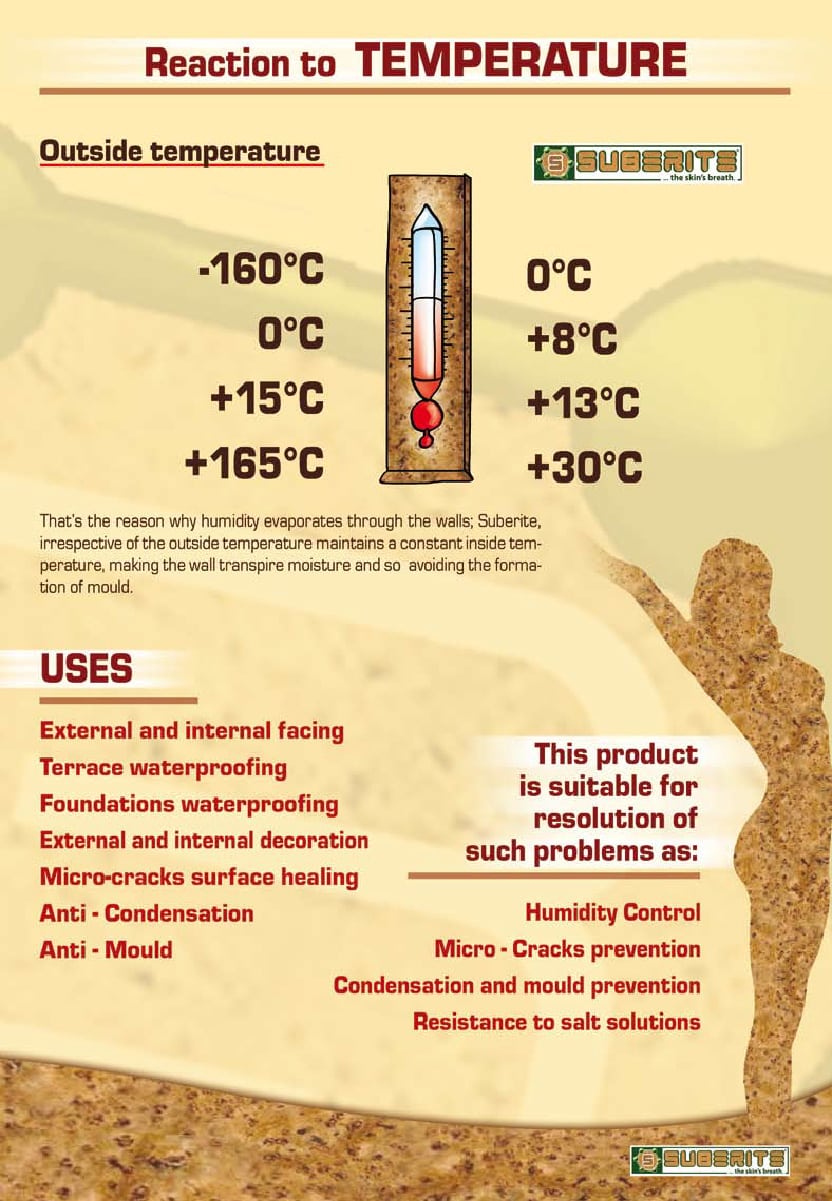Sprayed cork roof coatings can seal any cracks or holes in your roof. There are several advantages to using sprayed cork:
- Lightness
88% of the volume of sprayed cork comes from air, so it has a low density of 0.12 to 0.24 quarts per pound.
- Elasticity
Cork will regain its volume after being subjected to a damaging event.
- High Friction Coefficient
Micro suction cups that line the cork ensure that it adheres without sliding.
- High Impermeability
Liquids and gases have a very difficult time permeating cork, and it allows trapped vapors to escape through the plasmodesmos.
- Fire Retardancy
Cork is non-combustible and will not release incandescent particles.
- Impact Absorption
The force of an impact extends to adjacent regions, so it is dissipated as it’s absorbed.
- Poison Regression Coefficient = 0
Cork can be stretched in one direction with no deformation in the perpendicular direction. As a result, it conforms well to different shapes and sizes.
- Thermal Insulation
Cork acts as protection to the tree it comes from. Its alveolar structure, low water content, and lack of conductivity provide a resistance to heat 30 times higher than that of concrete.
- Low Water Content
Cork has a moisture balance with the environment of around 6%, so insects and microorganisms can’t invade and reproduce.
- Ease of Use
Cork can be made more elastic and soft by changing the water content.
- Acoustic Insulation
Cork reduces sound by 8 to 12 decibels, and if it is applied to two walls, the sound reduction capacity is doubled.
- Non-Toxic
Cork is completely non-toxic and has been used safely for centuries.
- Balance with Nature
Cork is removed initially when a tree is 40-50 years old, and then every 9 years. This process encourages rejuvenation, lengthening the life of the tree.
- Importance to Habitat
Cork trees provide protection to flora and fauna in the forests in which it grows.
- Environmental Improvement
When cork bark is trimmed from trees, it releases oxygen into the environment.
- Sustainability
Extracting, manufacturing, and applying cork does not have any environmental impacts.
The rapid pace of climate change means that it is necessary to look for solutions that do not further impact the planet. Cork provides an eco-friendly option for insulation for homeowners who want to be part of the solution.
Cork has been scientifically proven to be a high-quality insulator and poor-quality conductor. When cork is light in color, the peak surface temperature is between 36 and 38 °C. In dark colors, it is 44 to 46 °C. When ThermaShield is applied, the resins in the product help to keep cork of all colors at 20 to 25 °C.
ThermaShield’s Cool Roofing System improves the performance of the base roofing material in a few specific aspects:
- Thermal insulation
- Thermal reflectance
- Heat transmission
- Thermal offset
Environments with two different temperatures will experience heat transfer to balance the differential. This can happen through induction, convection, or irradiation.
An insulator has to work to keep heat inside during the winter and outside during the summer, but it is important to make sure that the insulator used is of excellent quality and correctly applied.


Irradiation
Irradiation occurs when electromagnetic waves transfer heat from a warm environment to a cold one, and it is the most common cause of heat loss in winter and heat entering interior environments in the summer.
Reflection can block irradiation. Reflection is rated by emission values. ThermaShield has emission values of between 0.55 and 0.59—far better than the emission values of standard building materials, which are between 0.82 and 0.9. As such, it provides better protection from irradiation.
Irradiation
Transfer of heat from a warm body to a less warm one through a transparent means like air or emptiness. The radiant and invisible heat is transmitted through electromagnetic waves. When this energy it affects, the heat is transferred and the temperature increases. Radiation is the primary cause of heat loss in winter, 65-80% of the dispersed heat is lost through the perimeter walls and the roof. In the summer, the percentage of heat transmitted by radiation is about 93%. Our reflective insulating materials reflect 30 to 80% of the radiant energy directed towards them. The radiation expresses the transmission of electromagnetic rays in space: each body is subject to the action of infrared rays from every direction. The ability to absorb infrared rays, and therefore absorb energy, is called emission. The reflection capacity of normal building materials have an emission value of 0.82-0.9 and absorb any form over time, by irradiation Energy. ThermaShield has an emission value around 0.55 – 0.59 and therefore reflects, by reflection, a greater amount of energy.


